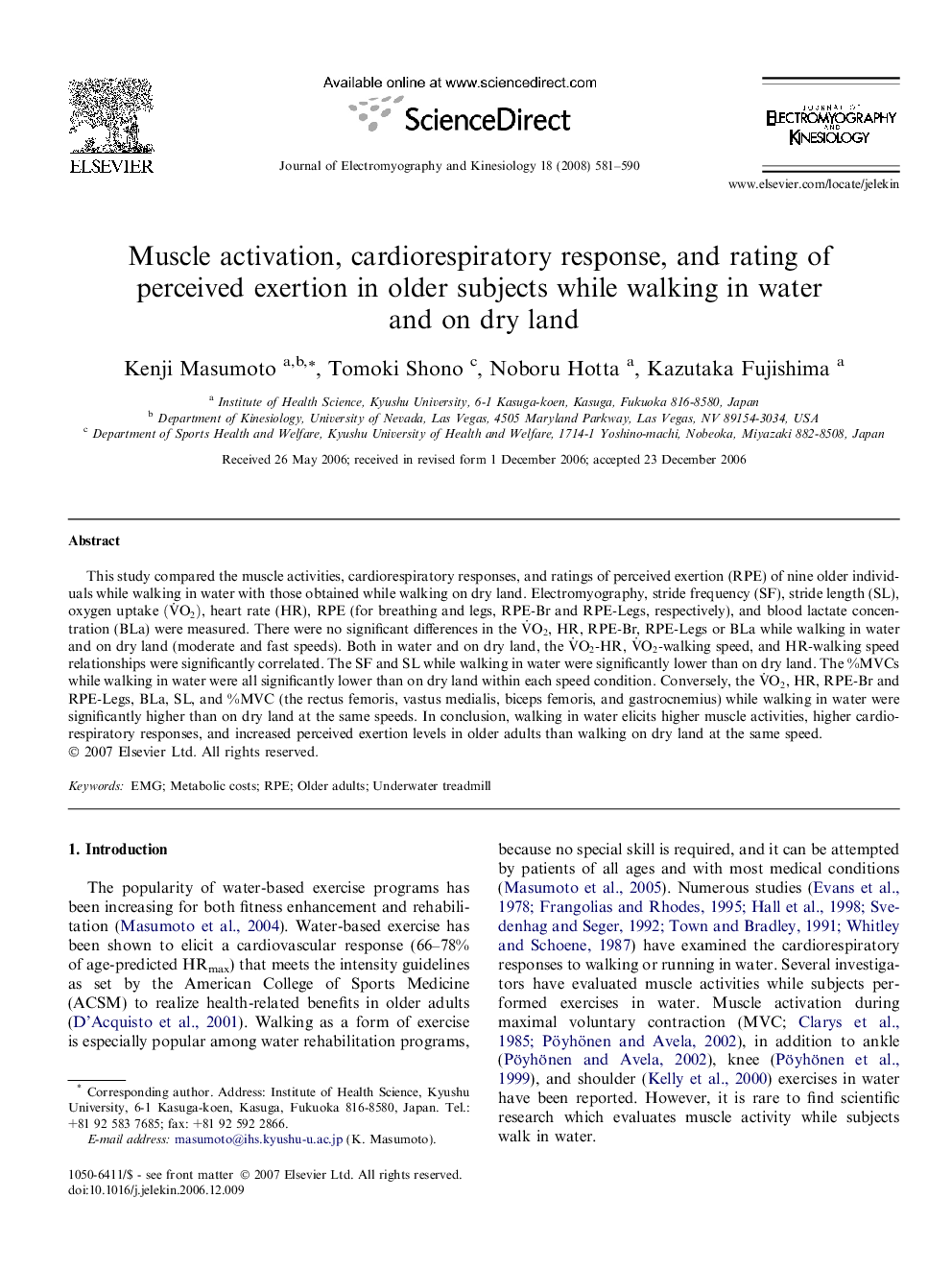| کد مقاله | کد نشریه | سال انتشار | مقاله انگلیسی | نسخه تمام متن |
|---|---|---|---|---|
| 4065626 | 1266261 | 2008 | 10 صفحه PDF | دانلود رایگان |

This study compared the muscle activities, cardiorespiratory responses, and ratings of perceived exertion (RPE) of nine older individuals while walking in water with those obtained while walking on dry land. Electromyography, stride frequency (SF), stride length (SL), oxygen uptake (V˙O2), heart rate (HR), RPE (for breathing and legs, RPE-Br and RPE-Legs, respectively), and blood lactate concentration (BLa) were measured. There were no significant differences in the V˙O2, HR, RPE-Br, RPE-Legs or BLa while walking in water and on dry land (moderate and fast speeds). Both in water and on dry land, the V˙O2-HR, V˙O2-walking speed, and HR-walking speed relationships were significantly correlated. The SF and SL while walking in water were significantly lower than on dry land. The %MVCs while walking in water were all significantly lower than on dry land within each speed condition. Conversely, the V˙O2, HR, RPE-Br and RPE-Legs, BLa, SL, and %MVC (the rectus femoris, vastus medialis, biceps femoris, and gastrocnemius) while walking in water were significantly higher than on dry land at the same speeds. In conclusion, walking in water elicits higher muscle activities, higher cardiorespiratory responses, and increased perceived exertion levels in older adults than walking on dry land at the same speed.
Journal: Journal of Electromyography and Kinesiology - Volume 18, Issue 4, August 2008, Pages 581–590